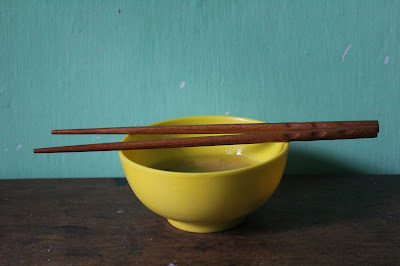 |
| Common Hoopoe preparing to take off . Pic: August 2017 |
Bhutan is perhaps a paradise for both birds and bird lovers. However, the ongoing developmental activities are seriously posing danger not only to some weather sensitive birds but also to some other wildlife.
Hoopoes are very colorful birds and found across Africa, Europe, and East-Asia. These birds are known for their spiky crown feathers at the top of their heads; making them look a bit unique yet special.
They are actually named after the sound of their own call. It has a very pleasant and soft call of its name (hoo…po…po…). Their name is a combination of the Latin "upupa" and the Ancient Greek "epops", that basically resembles for its fan-like crest and a sound it produces.
They are actually named after the sound of their own call. It has a very pleasant and soft call of its name (hoo…po…po…). Their name is a combination of the Latin "upupa" and the Ancient Greek "epops", that basically resembles for its fan-like crest and a sound it produces.
Although these birds are not globally considered as endangered, their population is found to be declining world-wide due to decline in their natural habitat, increasing human settlements, and pollution. On the other hand, the good news is that the overall record of the birds in Bhutan is quite an impressive one; there are over 670 bird species that are currently residing in "The Land of Happiness", and many are yet to be discovered.
However, being a "Carbon Negative Country", can we afford to remain complacent and take pride in learning about the decline in our cultural biodiversity?
What if by any chance we happen to lose these birds? Obviously, there will be an unbalanced ecosystem. Simply losing one food from the food web poses a great thread to the survival of a viable ecosystem. Then how much do we care for our biodiversity?
After having chased this beautiful bird for the last five years or more, I could at least come to know some of their behavior and migration patterns. Often, I had to use the "carrot and stick" approach to move forward and reach high whenever I failed to get one. Being behind this bird was more like "Titanic Game". Other times I had to be good at a "hide-and-seek" game just to see these birds around.
You should consider yourself lucky if you happen to spot these birds near a housing colony in Zhemgang town. These birds can also be seen around hospitals (BHU-I) and Dangkhar village in the early hours of the day or late afternoon. They are found in these vicinities for feeding and breeding. These birds have a unique color, and personality. They have a characteristically long, skinny and slightly bent beak that allows them to forage on the ground, dig into the dead logs to find insects, and more importantly to feed their young ones. Their beaks are also a weapon to fight with the enemy.
These birds favor open country with pastures, wooded areas, and broad fields. The breeding season of these birds starts from January and ends around in August. For breeding, old trees with hollows are their favorite, however, they also nest in piles of rocks and even on the ground under tree roots. It lays a maximum of twelve eggs in a season. The eggs incubation period is approximately 15 to 20 days.
Hoopoes tend to be very independent and solitary birds. They usually interact with each other only for breeding. Their average lifespan is about 10 years or so.
The main diet is insects, small reptiles, frogs and even plant matters, which means this bird is an omnivore.
They are very territorial and become aggressive upon seeing humans and other birds encroaching their areas. The female counterpart is dangerous and aggressive especially during incubation period and when it has young ones. It often ends up chasing other birds and sometimes in a brutal fight.
"When you are alone, stressful, broken, and want to be with nature, it sings the songs of your heart, it tells you the story of your heart, and calms down your emotions. This is the power of nature and birds in particular".
I am deeply concerned about the ongoing reckless inhumane activities, which disturb our delicate ecosystem and the well-being of indigenous birds' lives.
Birds are very important and should therefore be preserved. The unnecessary hunting of birds should be avoided at any cost and in as much as they have a destructive impact on plants, birds also contribute to the natural well-being of our environment in their own ways.
Birds are very important and should therefore be preserved. The unnecessary hunting of birds should be avoided at any cost and in as much as they have a destructive impact on plants, birds also contribute to the natural well-being of our environment in their own ways.
Do you still think these birds are not important to our community?
What can we do to prevent the loss of these bird's species from Zhemgang?










